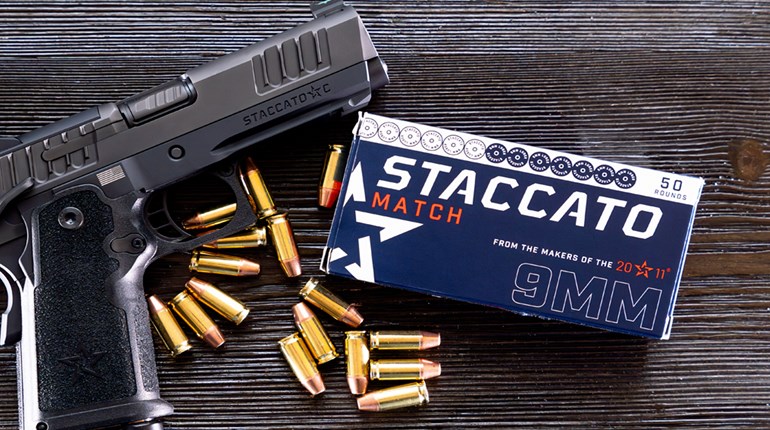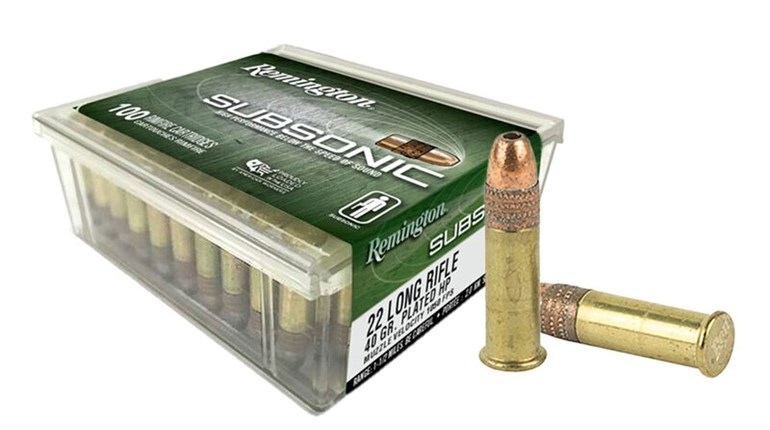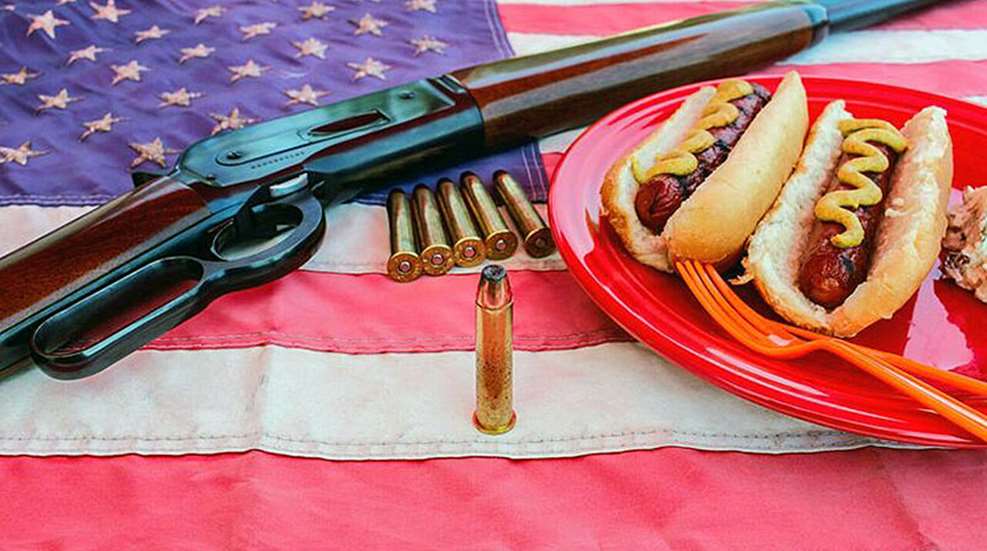
The anniversary of the signing of the Declaration of Independence—the date we associate with the birth of our nation—caused American Hunter's Shawn Skipper and I to discuss what the most “American” rifle cartridge is. I mean, there are so many fantastic American designs, like the .30-30 Winchester Centerfire, the .30-’06 Springfield and the .270 Winchester—but those have all been derived from or inspired by an existing design. The .30-30 WCF is actually a derivation of the old .38-55, and while the .30-30 certainly eclipsed its big brother’s popularity, it’s still an adaptation. The revered ought-six shares many attributes of the earlier 7x57mm Mauser, and while the Springfield is red, white and blue through-and-through, its European ancestry is plain to see. The same applies to the .270 Winchester, being the first-born and heir to the ’06 family empire.
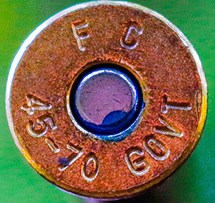 So what would it be? Well, America takes up a huge piece of land, and is greatly diverse in its terrain. We Americans are known around the world—with varying degrees of affection—as cowboys. Undoubtedly, I was getting somewhere; the "Most American Rifle Cartridge" had to be big, it had to original and it had to have cowboy ties. And it had to be relevant, not some one-off cartridge that faded into obscurity. The question pretty much answered itself: The .45-70 Government. It’s as big as the Grand Canyon, it’s right at home when chambered in a classic lever gun like the Winchester Model 1886, the Marlin Model 1895 or a classic Sharps falling block, and like America herself, it’s big enough to handle Alaska.
So what would it be? Well, America takes up a huge piece of land, and is greatly diverse in its terrain. We Americans are known around the world—with varying degrees of affection—as cowboys. Undoubtedly, I was getting somewhere; the "Most American Rifle Cartridge" had to be big, it had to original and it had to have cowboy ties. And it had to be relevant, not some one-off cartridge that faded into obscurity. The question pretty much answered itself: The .45-70 Government. It’s as big as the Grand Canyon, it’s right at home when chambered in a classic lever gun like the Winchester Model 1886, the Marlin Model 1895 or a classic Sharps falling block, and like America herself, it’s big enough to handle Alaska.
Bred for military use in 1873, the .45-70-405 was a ballistic improvement over the previous military chambering: the .50-70 Government. The cartridge designation was common for the era: caliber first, powder charge second and projectile weight last. Using a 405-grain projectile over 70 grains of black powder, the .45-70 Government offered a definite advantage over the slower and heavier .50-70—which used a 450-grain bullet—and when mated with the Model 1873 “Trapdoor” Springfield, greatly increased the effective range of the Union soldier. With a muzzle velocity of just around 1,400 fps, the 405-grain load proved to be an effective hunting tool as well, giving excellent striking power for the grizzlies and moose of the frontier areas, yet the recoil was manageable enough for the hunter to accurately place his shots.
The military heyday wouldn’t last very long, in comparison to the .30-’06 and the .308, but between 1873 and 1893—when the .45-70 was benched in favor of the .30-40 Krag—it saw all kinds of action, being fitted in the aforementioned Springfield Model 1873, as well as the Gatling Gun. If you’ve ever seen a Gatling in action, you will realize how demoralizing a hail storm of 405 or 500-grain bullets must have been.
But, as a hunting cartridge, the .45-70 Government never lost its head of steam. Why? With all of the other classic cartridges, with their champions who’ve waxed poetically about their virtues, and the bumper-crop of modern offerings—be they short-and-fat or long-and-lean, efficient designs or the latest fire-breathing-dragon—why would the .45-70 Government still have such a devout following? The answer is the premise of this article. The .45-70 is America.
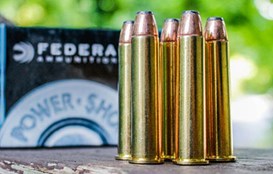 It is charismatic; when you uncase an 1886, or a bone color-case-hardened falling block chambered to the venerable cartridge, almost everyone around you will give a pause, and ask what you’ve got there. It has the look, the look we Americans like, the look of unprecedented finality. Many of you who’ve read my articles are familiar with my affinity for the classic safari cartridges—the .404 Jeffery and .416 Remington Magnum being chief among them—but even more than those, the .45-70 Government looks like it’s going to hurt something. It has a striking resemblance to a fire hydrant; wide, stout and immoveable. The .45-70 is a visual force to be reckoned with. It also does something that we hunters appreciate on a universal plane: it gives us a connection with the past. In my circle of shooting friends, there are those who have adopted the obscure cartridges, those who’ve embraced the latest releases, and all kinds in between, but to the man, they all have an appreciation for the classics. Simply put, the .45-70 Government makes you want to buy a Stetson and a horse.
It is charismatic; when you uncase an 1886, or a bone color-case-hardened falling block chambered to the venerable cartridge, almost everyone around you will give a pause, and ask what you’ve got there. It has the look, the look we Americans like, the look of unprecedented finality. Many of you who’ve read my articles are familiar with my affinity for the classic safari cartridges—the .404 Jeffery and .416 Remington Magnum being chief among them—but even more than those, the .45-70 Government looks like it’s going to hurt something. It has a striking resemblance to a fire hydrant; wide, stout and immoveable. The .45-70 is a visual force to be reckoned with. It also does something that we hunters appreciate on a universal plane: it gives us a connection with the past. In my circle of shooting friends, there are those who have adopted the obscure cartridges, those who’ve embraced the latest releases, and all kinds in between, but to the man, they all have an appreciation for the classics. Simply put, the .45-70 Government makes you want to buy a Stetson and a horse.
But it’s not just pure nostalgia. Modern .45-70 loads, with premium bullets, take the cartridge into an entirely different level than that of 1873. In a rifle with a strong action, the 400-grain loads can approach the 2,000 fps mark. When Ol’ Grumpy Pants and I headed to South Dakota to hunt bison on the Triple U Ranch, I used my .375 H&H, but GP had me handload him some .45-70 ammo using a 400-grain Swift A-Frame for his centennial Browning Model 1886, and Dad dropped his buffalo like third period French. Many of today’s factory loads are centered around the 400 and 405-grain slugs, as well as the lighter and faster 300 grain hollowpoints—like the Federal Fusion line—and that combination makes for a pair of light and heavy bullets capable of taking almost all the world’s game, though you might have to get a bit closer than with a scoped magnum.
The bear guides have seen the wisdom of carrying a lever-action chambered to .45-70; it’s a fast-handling, hard-hitting combination that’s perfect for the thickets that wounded bear seem to find, and will truly stop a bear in its tracks.
If you’re looking for something out-of-the-ordinary, find a good-fitting .45-70, put on yer spurs, and try your hand at iron sights again; it can be a very rewarding prospect in a world filled with ballistic-compensated reticles and laser range finders. You may just find the desire to get lost in the wilderness with that rifle, far out of cell phone range. Happy Birthday America, and long live the .45-70 Government!
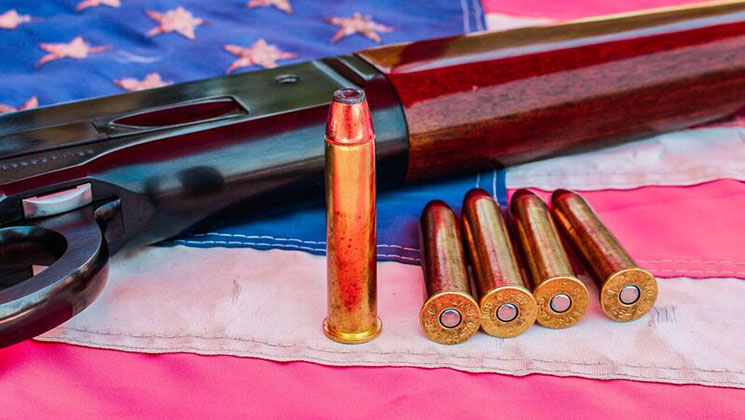
Want to read more from Philip Massaro? Check out the stories below:
• Tips for the Traveling Hunter
• How to Choose a Gun Safe
• Best Gun Cases for the Traveling Hunter
• An Ode to the .30-06 Springfield
• Top 5 Boutique Bullet Companies
• Top 5 .22 Long Rifle Loads
• 5 Reasons Round-Nose Bullets Are Still Cool
• Top 5 Dangerous Game Loads
• Top 5 Turkey Loads
• 5 Rifle Cartridges That Need to Make a Comeback
• Top 5 Safari Calibers
• 5 New Year's Resolutions for Hunters
• What Your Favorite Rifle Cartridge Says About You
• America's Most Wanted Cartridges
• America's Strangest Game Laws
• What Your Favorite Rifle Cartridge Says About You, Part II
• Top 5 Overrated Rifle Cartridges
• Top 5 Underrated Rifle Cartridges
• 5 Cartridges You Might Not Know About
• Top 5 Wildcat Cartridges
• An Ode to the Ruger Mini-14
• Top 5 Hog Loads
• Top 5 Deer Bullets
• Why .30-30 Winchester Will Never Die












